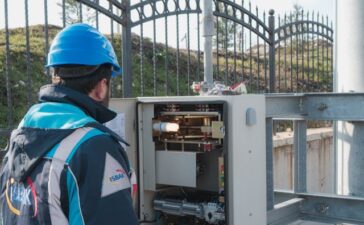Bath resurfacing, also known as bathtub refinishing or reglazing, is a cost-effective solution to breathe new life into an old or worn-out bathtub. This process not only restores the appearance of your bathtub but also strengthens its structure, extending its life and enhancing the overall look of your bathroom without the need for a full replacement. As homeowners seek more sustainable and budget-friendly home improvement options, bath resurfacing emerges as a popular choice for its impressive transformation capabilities and economic benefits.

The primary advantage of bath resurfacing Adelaide is cost efficiency. Replacing a bathtub involves not only the cost of the new tub but also the expenses associated with demolition, removal, and plumbing alterations. In contrast, resurfacing can be performed at a fraction of these costs and offers an almost instant upgrade to your bathroom’s aesthetic. This makes it particularly appealing to those looking to improve the value of their home before selling or simply wishing to update their space without a major renovation.
Another significant benefit of resurfacing is the time saved. A full bathtub replacement can take several days to weeks, considering the time required for removal, installation, and plumbing adjustments. Resurfacing, however, typically requires only a few hours to a day to complete, with the surface ready to use within 24 to 48 hours after application. This minimal downtime is invaluable for households that cannot afford to lose access to their bathroom for an extended period.
The resurfacing process begins with a thorough cleaning of the bathtub to remove any soap scum, stains, and residues. After cleaning, any chips or cracks are repaired to ensure a smooth surface, which is crucial for the new finish to adhere correctly. The tub is then sanded down to create a rough surface for the new coating to bond effectively. Once preparation is complete, a primer is applied, followed by several layers of a specialized coating. The final layer is often a sealant, which provides a glossy and protective finish that makes the tub look brand new.
One of the reasons for the growing popularity of bath resurfacing is its contribution to environmental conservation. By refinishing a bathtub instead of replacing it, homeowners prevent a large, bulky item from ending up in a landfill. Considering the environmental impact of manufacturing a new bathtub—resource extraction, energy use, and emissions from transportation—resurfacing is undoubtedly a greener choice.
Despite its many advantages, bath resurfacing is not without its challenges. The chemicals used in the resurfacing process can be hazardous, requiring proper ventilation and protective gear to ensure safety during application. It’s essential to hire professionals who specialize in this service to achieve a high-quality finish and to ensure that the coatings are applied safely and effectively.

Furthermore, while resurfaced bathtubs are durable, they require proper care to maintain their new appearance. Abrasive cleaners and scrubbing tools can damage the finish, so it’s recommended to use gentle cleaning products and soft cloths or sponges. With proper maintenance, a resurfaced bathtub can last many years, delaying the need for total replacement. When considering bath resurfacing, it’s important to assess the condition of your existing bathtub. Bathtubs that are too badly damaged may not be ideal candidates for resurfacing, as severe structural issues might not be rectifiable with a simple surface update. In such cases, replacement might be the only viable option.





